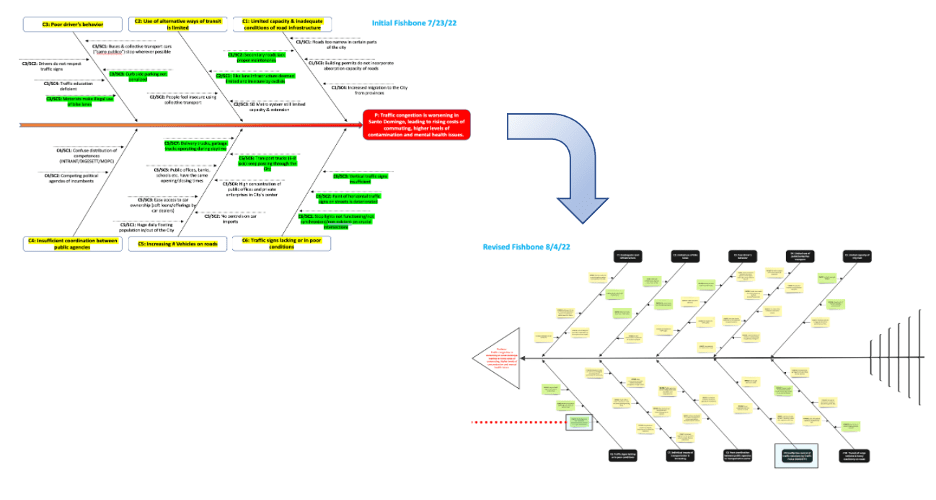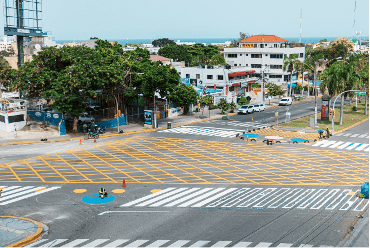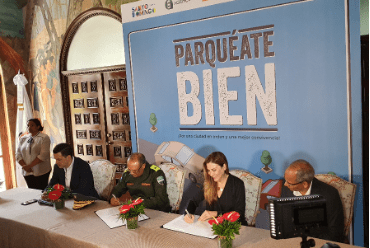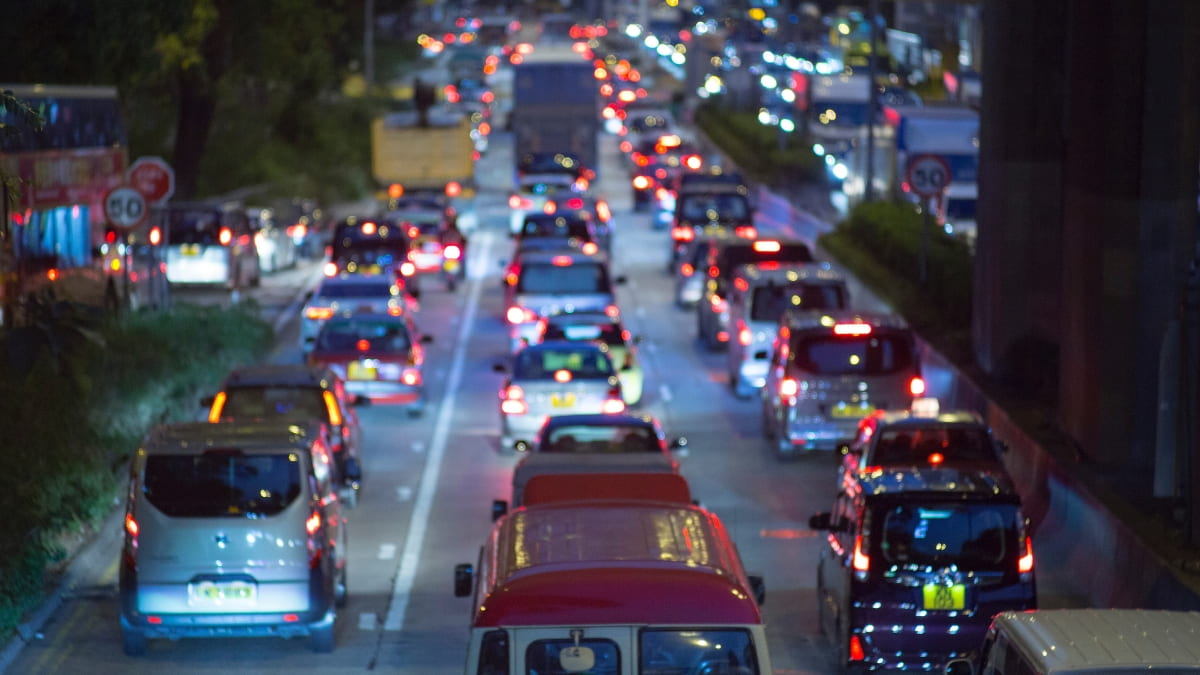Guest blog by Romeo Ramlakhan, IPP ’22
“Good luck with that!” Those where the exact same words an elected official in City Hall told me in the early days of my tenure as Chief of Staff in the City of Santo Domingo in 2020, as we were discussing municipal policy agenda-setting for the coming years. Indeed, the problem seemed enormous and impossible to cope with, as many previous attempts had failed miserably and opinions about external authorizers like the National Transportation Authority and Traffic Police were not favorable. But then again, “if nobody does anything, what will our City look like in 5 years, 10 years?” was my short response. The following reflective silence and an explicit “you’re right” was the spark I needed to embark on this endeavor. We started planning all these great interventions, identifying resources, coordinating with other institutions etc… About a year later, we only managed to implement one (1) concrete measure, without any visible impact: traffic congestion had gotten worse, it seemed. Frustration mounted, and resignation set in.
Around that time, I had applied for the IPP course which would turn out to be a “game changer” for me as a public servant. PDIA helped me better understand what was going on with traffic in Santo Domingo, by deconstructing the real challenge at hand “Traffic congestion is worsening in Santo Domingo, leading to rising costs of commuting, higher levels of contamination and mental health issues”. Moving forward, the more people I engaged the more complex the problem turned out to be, as is illustrated by the Ishikawa diagram (fishbone analysis) below. Different stakeholders interpret certain situations in distinctive ways. One thing was certain, though: the problem was extremely relevant and a priority for all the main authorizers involved. My “projection strategy” seemed to be working, we managed to form a cross-institution supportive team, but “what can we do?”, “how?” and “do we have the resources?” were frequent questions that almost immediately followed.

Findings fitting answers to these -and other burning questions- seemed to be impossible at first, given the time, budget, and personnel constraints we were dealing with in City Hall. In this context, the triple-A change space analysis provided in the PDIA toolkit was crucial in identifying those entry points which our team could act upon.

Once consensus was reached on the issues with enough space for change, the next step was to define what to do. Entry points do not necessarily have to imply big changes; important is that your actions generate enough momentum to build legitimacy towards authorizers, so you can gain more support for doing other (even bigger) things. The team started off by inquiring about existing successful practices that for some reason were terminated, or others that had the potential to have a positive impact on the challenge at hand. Subsequently, we started iterations on improving and rehabilitating traffic signs, and implementing additional safety measures on two critical intersections in the City to better regulate transit through certain heavily congested sectors. Monitoring mechanism were put in place, and key authorizers were kept informed regularly on progress and eventual difficulties.


Success on these initial iterations came in small bits and sizes, but enough momentum was built to motivate authorizers from City Hall, National Transportation Authority and Traffic Police to agree and undertake an even bigger endeavor listed on the fishbone structure: tackle illegal curb-side parking. In September 2022 we initiated the “Parquéate Bien” pilot program on 13 heavily congested secondary roads, by eliminating curb-side parking on non-designated areas and implement elevated fines to violators. Two weeks into the pilot, traffic flow had increased by 43% on those roads and now plans are in the making to expand this program to other sectors of Santo Domingo.
So, what have we learned so far?
First, leadership matters. Team leaders have to bear in mind that their behavior, actions and interactions do impact the emotions of those who are working with them. As seen in Rob Wilkinson’s “4P model of leadership”, we need to attract and work with people to achieve the results we envisage in implementing public policies. Second, teaming, teamwork, delegation of responsibilities, and empowerment are essential. Third, empowerment, however, is only effective when all team members are held accountable for the tasks delegated to them and for the way these tasks are being executed. Therefore, precise and regular reporting is essential to build trust and mitigate risks, not only within the team but also towards the authorizers higher up in the organization. Fourth, the more stakeholders we engage, the more information, data, and knowledge we gain to better frame and understand the problem. Fifth, regular and opportune communication of (any) progress is crucial for maintaining administrative and political support, especially when the unknowns are many and multiple authorizers are involved. Sixth, start iterating on multiple solution ideas that are relatively inexpensive and easy to adjust, thereby increasing the chance for success. These quick wins, in turn, will foster legitimacy and thus broaden authorization to go ahead and try bigger interventions.
Thus far, PDIA has proved to be a very useful tool in tackling this complex problem of traffic congestion in the City of Santo Domingo. Its systematic and gradual approach permitted me to find alternative ways to act on a very complex problem, despite limitations and initial skepticism from key stakeholders. Along the way we managed to expand authorization and engage people in other institutions with (more) jurisdiction to act on the challenge at hand, more specifically the National Transportation Authority and Traffic Police. These interactions gave us access to additional information, reports, and data on traffic congestion in Santo Domingo. Therefore, given the apparent benefits, in City Hall we are contemplating applying this approach on the ailing and outdated drainage system that recently caused serious flooding, resulting in death and destruction.
As you can perceive throughout this article, implementing public policy is about people and PDIA is a hard and long road to follow. Patience, perseverance and getting priorities straight are key to keeping things on track. 2023 is pre-election year in the Dominican Republic and my main authorizer, the Mayor of Santo Domingo, may be up for reelection. Or she might not. Priorities might change, pressure will surely rise to produce more results quickly. Let’s see how my PDIA approach to tackle traffic congestion in Santo Domingo holds up.
This is a blog series written by the alumni of the Implementing Public Policy Executive Education Program at the Harvard Kennedy School. Participants successfully completed this 6-month online learning course in December 2022, with support from the Bloomberg Harvard City Leadership Initiative. These are their learning journey stories.
